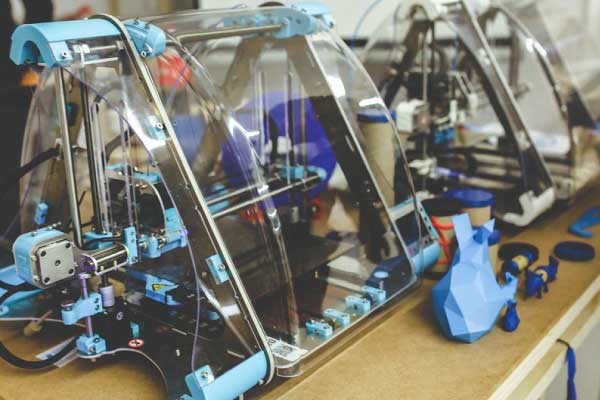Today’s organizations face a number of trends that impact the way supply chains are designed and managed. These trends are a result of a fast-changing global and technologically connected economy that creates unique challenges companies must address.
Globalization
In the eyes of the economist Thomas Friedman, globalization has replaced the so-called Cold War of the post–World War II era as the dominant driving force of world economics.2 The concept of the “global marketplace” has changed the meaning of how and where the business is conducted, for all enterprises and for individual customers. Changes in information technology, transportation, and government policies have made the concept of the global economy a fact of life.
A number of countries have aggressively pursued opening up international trade. This has served to open new markets and sources of supply for most companies, both large and small. Further, these opportunities have been made possible through information technology, which has helped break the distance barrier. Companies have benefited from a larger choice of product sources. Consumers have also benefited due to greater product choice, higher quality, and lower cost.
Managing global supply chains, however, has a number of challenges. The distance factor can become a significant barrier when shipments move thousands of miles from suppliers to customers. In an environment of reduced cycle times, expected higher levels of reliability, and emphasis on efficiency, the distance factor presents special challenges to supply chain managers.
Outsourcing trends in supply chain management
Outsourcing is hiring a third party to perform a set of tasks for a fee. Companies have historically and routinely outsourced certain activities, such as janitorial services, records management, or uniform cleaning. The difference today is that companies are outsourcing almost all activities and on a much larger scale.
Increased competitive pressure has forced companies to recognize that they compete through their core competencies (sometimes termed “distinctive competencies”). This means that an organization creates superior value for customers by managing their core competencies better than competitors. To be able to focus on core competencies, many companies outsource other activities to those that can do them better.

Outsourcing can involve hiring out one aspect of the operation, such as shipping, to outsourcing an entire part of the manufacturing process. The practice has rapidly grown in recent years and has helped companies be more efficient by focusing on what they do best.
The convergence of technologies at the turn of this century has taken the concept of outsourcing to a new level. Massive investments in technology, such as worldwide broadband connectivity, the increasing availability of lower-cost computers, and the development of software such as e-mail, search engines, and other software have allowed individuals to work together in real-time from anywhere in the world.
The result has been the outsourcing of virtually any job imaginable. Manufacturers have outsourced software development and product design to engineers in India, accounting firms have outsourced tax preparation to India, and even some hospitals have outsourced the reading of CAT scans to doctors in India and Australia.
Information Technology
An important driver of supply chain management is technology. Technological advances have enabled companies to produce products faster, with better quality, at a lower cost, and this trend will continue. Many processes that were not imaginable only a few years ago have been made possible through the use of information technology.
Advancements in information technology have in particular had the greatest impact on SCM. Information technology is a technology that enables storage, processing, and communication within and between firms. In fact, information technology can be viewed as an enabler of SCM, as without it coordination between supply chain members would not be possible.
The most popular type of information technology and most familiar to all is the Internet, which has had the greatest impact on the way companies conduct business. The Internet has linked trading partners—customers, buyers, and suppliers—and has enabled electronic commerce and the virtual marketplace. This is one of the greatest forces that has made information sharing along the supply chain possible.
Another powerful information technology is enterprise software, such as enterprise resource planning (ERP). These are large software programs used for planning and coordinating all resources throughout the entire enterprise. They allow data sharing and communication within and outside the firm, enabling collaborative decision making.

Other examples of information technologies that have impacted the supply chain include wireless communication technologies. We are all familiar with cellular phones and pagers from everyday life. However, these technologies can also significantly improve business operations. For example, wireless homing devices and wearable computers are being used in warehouses to quickly guide workers to the locations of goods.
This serves to significantly improve warehouse operations and logistics. Wireless technologies, enhanced by satellite transmission, can rapidly transmit information from one source to another. For example, Wal-Mart uses company-owned satellites to automatically transmit point-of-sale data to computers at its warehouses for replenishment.
Global positioning systems (GPS) are another type of wireless technology that uses satellite transmissions to communicate exact locations and have dramatically improved logistics transportation. GPS has numerous logistics applications such as in distribution, where trucking companies use GPS technology to identify the exact location of their vehicles.

Radiofrequency identification (RFID) is yet another wireless technology that is dramatically changing supply chain operations. RFID uses memory chips equipped with tiny radio antennas that can be attached to objects to transmit streams of data about the object. For example, RFID can be used to identify any product movement, reveal a missing product’s location, or have a shipment of products “announce” their arrival.
Empty store shelves can signal that it is time for replenishment using RFID, or low inventories can signal the vendor that it is time to order more products. In fact, RFID has the potential to become the backbone of logistics, as it can identify and track billions of individual objects all over the world, in real-time.
These information technologies collectively provide access to data never before available. This information has changed how products are bought and sold and has changed the modus operandi of the marketplace. Buyers no longer have to go to the seller’s place of business to view and buy products. Rather, consumers can complete purchases seven days a week, 24 hours a day. IT has changed how buyers and sellers interact in the marketplace, both business-to-business (B2B) and business-to-consumer (B2C).
Big Data Analytics
Big data analytics has had one of the biggest impacts on supply chain management. Big data refers to large datasets whose size is so large that the quantity can no longer fit into the memory that computers use for processing. Businesses are awash in data captured from every source imaginable, which can be structured or unstructured.
This data includes point-of-sale (POS), radio-frequency identification (RFID), or global positioning systems (GPS) data, or it can be in the form of Twitter feeds, Facebook, call center data, or consumer blogs. This data can be captured, stored, communicated, aggregated, and analyzed. Analytics is applying math and statistics to these large datasets. Many of these statistical tools, such as correlation and regression analysis, have been around for decades.
What is different is the combination of big data with statistical algorithms—or analytics—fueled by today’s computing power. This combination creates the ability to extract meaningful insights and turn information into intelligence. Further, advancements in machine learning and artificial intelligence (AI) have created significant new opportunities to use big data and develop new and more powerful algorithms.
Few areas of business have been transformed by big data analytics as much as supply chain management. Technology has enabled physical objects to be embedded with electronics, such as sensors and software, enabling these objects to collect and exchange data. These objects can be buildings, vehicles, machines, and all other entities that make up the supply chain.
The connectivity of these physical objects with electronic devices is called the Internet of Things (IoT). As consumers, we are all accustomed to same-day retail deliveries and the ability to quickly find and purchase items online. However, achieving such high responsiveness requires a data-driven, end-to-end, supply chain system.
3-D Printing, Additive Manufacturing, and Robotics
Research conducted by IBM has identified three emerging and transformative manufacturing technologies: three-dimensional (3-D) printing, a new generation of intelligent assembly robots, and the rise of open-source hardware. Each of these trends taken alone is transformative. However, their power is multiplied when they are combined together with big data analytics.
The first of these trends is 3-D printing or additive manufacturing, a technology that is changing the way manufacturing is being conducted. This technology is similar to ink-jet and laser-jet printers we are familiar with, except that these are three-dimensional printers. These printers work by depositing thick layers of materials one on top of the other, such as layers of plastics and metals.
The layering of these materials gradually builds up until the object is produced. The final creation is a solid object from software design. This process has enabled desktop manufacturing of one object at a time and does not require economies of scale. Additive manufacturing is just an industrial version of 3-D printing.

This technology is already being used to make items such as medical implants, and to produce plastic prototypes for engineers and designers. A number of manufacturers, such as General Electric, are already developing plans to implement 3-D printing on a broader scale.
The second of these trends is a new generation of intelligent assembly robots. These robots have greater capabilities than in the past, while the cost and installation requirements of these technologies have made them broadly accessible.
Unlike past robotic systems that required large complex installations and typically started at around $250,000 per assembly station, the new generation costs a fraction of that price and can be installed in a day. These advancements have made state-of-the-art automation within reach of even small manufacturing companies.
The third of these trends is open-source hardware. In the past, design information for electronic or computer hardware was copyrighted or licensed. Often companies engaged in reverse engineering to learn how the product was made.
The new trend in open-source hardware allows electronic and computer hardware design to be made available for use at no charge. This allows the sharing of all the information needed to build the product—such as documentation, schematic diagrams, construction details, parts lists, and logic designs. This will significantly accelerate the design and creation of new products.
Collectively these trends and technologies are removing the physical constraints historically associated with manufacturing, such as building molds, ordering parts, and reconfiguring assembly machinery. The manufacturing process can now be run through software. Driven by big data analytics, it drives the digital supply chain.
Postponement trends in supply chain management
Companies are continually struggling to reach global markets while providing local customization. Even in a geographically compact area like Europe, there are still significant needs for local customization. For example, consider differences in preferences for washing machines in different European countries.
The French, for example, prefer top-loading machines, whereas the British prefer front-loaders. The Germans prefer high-speed spins, but the Italians prefer a lower speed. Similar differences occur with other products, such as soft drinks, requiring the Coca-Cola Corporation to offer many different soft-drink flavors to cater to the unique local tastes. These differences significantly affect SCM.
The challenge for a global company is to achieve the cost advantage of standardization while still catering to local taste. This is essentially mass customization coupled with rapid delivery. One way a company can achieve this is to seek standardized parts, components, and modules, and then, through flexible manufacturing and logistics, provide specific product demands to each market. This is sometimes called postponement, where completion of the final product is postponed to the last possible moment until local demands are known with greater certainty.
Hewlett-Packard (HP) was known for this in the production and distribution of their printers in the European market. The company completed the manufacture of the product, store it in a central location, then waited to finalize packaging and specific country/language labeling until local demand was known. Postponement is an important strategy for companies to reach diverse geographic areas while still providing customization.
The Lean Supply Chain
The lean philosophy has been of great importance in business as it has focused on the elimination of waste and has helped numerous companies become more competitive. The importance of lean thinking has now been extended to the supply chain. It has been recognized that although individual firms can become lean by themselves, waste anywhere in the supply chain is passed on to the customer, and ultimately everyone in the supply chain pays for it. For example, shifting inventories to suppliers is ultimately passed on to the customer in the form of higher cost and makes the entire supply chain less competitive.
The lean supply chain can be defended as the set of all organizations directly linked by upstream and downstream flows of products, services, finances, and information that collaboratively work to reduce cost and waste. As such, a lean supply chain requires all supply chain organizations to work together. It requires a coordinated effort among partners to eliminate waste across the entire supply chain by analyzing processes and identifying areas for improvement.
Managing Supply Chain Disruptions
SCM and global sourcing have lowered purchase prices and expanded market access. This wide reach, however, has increased the level of supply chain risk. There is an increased risk of product and service flow disruptions and in the magnitude of these disruptions. Supply chain disruptions are a significant corporate crisis and can be very costly. Imagine, for example, a producer of an influenza vaccine suddenly not being able to receive its key ingredients from a supplier during peak flu season. Production may be halted, the company’s survival may be of serious concern, and the welfare of customers might be jeopardized.
Managing supply chain risks is challenging because disruptions can occur for a wide variety of reasons. This can include transportation delays; industrial plant fires; work slowdowns or stoppages; natural disasters, such as earthquakes or hurricanes; and man-made disasters, such as the 9/11 terrorist attacks.
As companies have increasingly focused on lean operations, they no longer have the inventory or excess capacity to make up for production losses caused by such disruptions. As a result, they are highly vulnerable to even a short material-flow problem. Companies are continuing to look for ways to guard their supply chains against disruptions. Some strategies include having access to backup suppliers, building excess capacity into the system, screening and monitoring suppliers for supply chain risks, requiring suppliers of critical items to develop detailed disruption plans, and including the expected costs of disruptions in the total cost of sourcing.
Supply Chain Security
Related to supply chain disruption is the study of supply chain security and maintaining product integrity as goods are moved across the globe between borders. Today’s strict security initiatives make supply chain relationships much more complex, and the study of ways to protect security while maintaining efficiency is now a key issue. This is particularly critical when dealing with international freight movement.
Tighter security and inspection at ports can significantly increase transit time and increase costs. Government regulations aimed at preventing terrorist threats, such as Customs-Trade Partnership Against Terrorism (C-TPAT) and the Container Security Initiative (CSI), require companies to engage in high levels of compliance. Although these measures are necessary, companies are working to find ways to comply while still engaging in outsourcing, offshoring, and global sourcing on a cost-efficient scale.
Other concerns are theft and product tampering. This is especially true for high-value goods and pharmaceuticals, although anything that has intrinsic value can potentially be stolen. Supply chain security looks at different ways to protect the product, from using electronic seals to prevent tampering, to using RFID and GPS technologies to track product location.
Sustainability and the “Green” Supply Chain
Environmental concerns, including climate change, energy use, environmental contamination, and resource depletion, are here to stay. Consider that the economies of India and China are growing at double-digit rates, and the population of the world continues to grow, creating shortages of many resources that we used to take for granted. Corporations are increasingly aware that they must design their supply chains for sustainability. This means designing processes to use environmentally friendly inputs and creating outputs that can be recycled and that do not contaminate the environment.
Sources of supply and movement of goods are huge factors in ensuring sustainability. Consider that Starbucks selects and manages its growers to ensure the integrity of their environment. Starbucks mandates the harvesting practices of their growers that do not damage rainforests.
Other aspects of the supply chain are also important to sustainability, such as packaging and transportation to reduce environmental impacts. Changes such as reducing the amount of cardboard or filler by designing “smart packages” can save companies money.
McDonald’s has recently introduced new packaging with a pledge to source 100% of all fiber-based packaging from recycled or certified sources by 2020. Coca-Cola has been producing a partially bio-based Plant Bottle and is working toward a 100% bio-based Plant Bottle, whereas PepsiCo is experimenting with edible packaging. In transportation companies are working to optimize delivery strategies that reduce the carbon footprint.

For example, 3M has developed an innovative system to install adjustable decks in trucks, allowing placement of pallets on two levels, thus reducing the number of daily truckloads. Companies are also realizing that these types of measures are not only important to compliance with environmental regulation and consumer demand, but they are also good business practices. Starbucks, for example, realized that by working with growers to protect the environment, they are assured of a consistent and reliable source of supply.
Innovation
Innovation is increasingly becoming a critical capability for companies across the globe. This can include designing new products that satisfy customer demands, designing new cost-cutting production processes, or coming up with more efficient product delivery mechanisms. For example, consider a pharmaceutical company recently involved in developing the flu vaccine for the recent outbreak of H1N1. Innovation involves identifying the vaccine components and doing clinical trials, as well as production, packaging, and distribution. This must be done efficiently, ensuring the highest security, all the while doing it as expediently as possible to reach the market quickly.
Companies that compete on innovation realize that their entire supply chain must be designed to support their efforts and are designing them accordingly. These chains are typically shorter to reduce time to market. Also, innovative products need greater protection from copying and tampering, and security issues become critical. The role of suppliers is especially important in these supply chains.
Suppliers need to be involved early in the product design process to shorten the design time. Also, suppliers are an excellent source of product ideas and process improvements. As competitive pressures increase, continuing to find ways to manage supply chains for innovations will remain an important issue. This means coming up with new ideas and being able to produce and deliver products faster than competitors.
The Financial Supply Chain Trend
The financial supply chain is intimately tied to SCM, and managing the flow of funds is an essential ingredient for its success. In today’s downturned global economy, companies are under greater financial pressures than ever before to cut costs. The result has been a push to redesign entire supply chains and search for less-costly sources of supply.
This includes strategies such as global sourcing and production outsourcing, trying to achieve labor cost advantages by pushing operations offshore, and outsourcing noncore activities. As companies send operations offshore, however, there are significant financial implications. These include masked hidden costs, such as managing more expensive plants and equipment in emerging countries.
Pushing inventory downstream to suppliers often means higher inventory costs, as these suppliers typically have a higher cost of capital. Also, global operations can wreak havoc on the financial supply chain, as the longer chain has a higher amount tied up in working capital.
Another area of interest for management is the “cash-to-cash cycle,” which is the time it takes to convert an order into cash. Although management has long recognized the competitive impact of shorter order cycles, it has recently seen the impact the total order process has on working capital. This is another financial supply chain issue that companies are trying to closely manage.
As the supply chain provides a significant cost-cutting opportunity, the trend of managing finances and identifying the risks and challenges of the financial supply chain will continue to be a significant trend in the future.




